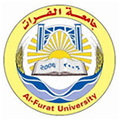آخر الأخبار
تأثير الجفاف الجزئي لمنطقة الجذور في الغلة الحبية وكفاءة استخدام السماد الأزوتي للذرة الصفراء [.Zea mays L] تحت نموذجين للري بالتنقيط
2011, Volume 4, issue 14,pp 324-341| Cite as
Effect of partial Root Zone Dring on Maize Yield and fertilizer use efficiency N under two drip irrigation methods
| authors |
Abdel Naser Al darir, Mussaddak Janat , Ammar Wadis Arslan , Abdelghani Al Khaldi |
| Abstract |
New irrigation strategies must be established to use the limited water resource more efficiently. Partial root zone drying (PRD) is a further development of DI. The PRD approach is to use irrigation to alternately wet and dry (at least) two spatially prescribed parts of the plant root system. Field experiment was carried out at Tel Hadia Experiment Station in north syria to evaluate response of maize crop and fertilizer use efficiency (FUE) (N" Isotope) under three levels of irrigation 100%, 85%, 65%, of potential evapotranspiration were compared. In addition to assessment two drip irrigation methods, first one both one irrigation line to irrigated two plant rows, and the second partial root-zone drying (PRD). The experiment Design was Split Plot Design with six replicates, during 2007 and 2008 growth seasons. Significant effects of the irrigation levels on yield and (FUE)-N were found among two experiments years, 100% irrigation treatment had significant increase in grain yield and (FUE)-N on 85% and 65%. The first irrigation method had significant increase in grain yield and (FUE)-N on the second irrigation method. Results revealed that mean of crop evapotranpiration (ET) for first method was 544 mm according to 100% irrigation level, whereas the second method was about 0.65 of (ET) the first one to same irrigation level, with relative grain yield 0.91 of first method to 100%, other meaning when (ET) was equal in the both irrigation methods, grain yield increased 40% at used (PRD). The highest value of water use efficiency was 26.3 kg /mm grain yield was obtained with 100% irrigation treatment, When the irrigate method was (PRD), But the lowest value of (WUE) was 11.7 kg /mm grain yield, it was obtained to the same irrigation treatment, When the irrigate method was first method. The highest value of nitrogen fertilizer use efficiency was 21.1% was obtained with 100% irrigation treatment under the first method. It is recommend that to employ (PRD) method to irrigate corn, which might save irrigation water by almost 50% , that use to irrigate more agricultural area, in addition to the loss of grain yield was 8% compared the first method at same treatment.
Key words: Partial root-zone drying (PRD), drip irrigation, maize, water use efficiency (WUE), evapotranspiration (ET) |
| الكاتب |
عبد الناصر الضرير, مصدق جانات, عمار وهبي , أوديس أرسلان , عبد الغني الخالدي |
| الملخص |
يتطلب التفكير مع محدودية المصادر المائية بوضع خطط مستقبلية تضمن الحصول على أعلى كفاءة لاستخدام تلك المصادر، من الممكن أن يكون الجفاف الجزئي لمنطقة الجذور أحد هذه الحلول. ولبيان ذلك تم تنفيذ تجربة حقلية لموسمين زراعيين 2007 و 2008 في محطة بحوث تل حديا (شبه جافة) شمال سورية على محصول الذرة الصفراء، تحت ثلاث مستويات ري 100%، 85% و65% من السعة الحقلية كل مستوى يضم طريقتي ري بالتنقيط الأولى خط ري لخطين نبات والثانية طريقة الجفاف الجزئي لمنطقة الجذور (Partial Root zone Drying (PRD، حيث يتم ري نصفي المجموع الجذري بالتناوب، هدف البحث إلى معرفة مدى استجابة الغلة الحبية وكفاءة استخدام السماد الأزوتي (Fertilizer use efficiency (FUE لمعاملات الري وطريقتي الري المذكورة أعلاه، حيث استخدمت تقانة N15، صممت التجربة وفق القطع المنشقة وبست مكررات. أظهرت نتائج التحليل الإحصائي لموسمي النمو معا وجود فروق معنوية p≤ 0. 05 بين معاملات الري في الغلة الحبية و وكفاءة استخدام السماد الأزوتي، حيث تفوقت المعاملة 100% على معاملتي الري 85% و 65%، وتفوقت معاملة الري 85% على 65% تفوقت طريقة الري الأولى على الثانية في الإنتاج الحبي وفي (FUE) الأزوتي. بلغ متوسط التبخر نتح (ET) لمتوسط موسمي النمو 544 مم بالطريقة الأولى لمعاملة الري 100% بينما شكل بالطريقة الثانية 0.65 من تبخر نتح الطريقة الأولى، وشكلت الغلة الحبية بالطريقة الثانية 0.91 من الأولى لنفس المعاملة. وجد أنه عند تساوي التبخر - نتح بكلتا الطريقتين، يكون هناك زيادة بالإنتاج حوالي 40% عند استخدام طريقة الري الثانية، بلغت كفاءة استخدام الماء (WUE) وفقا لموسمي النمو 26.3 كغ /ها/مم للمعاملة 100% بالطريقة الثانية، بينما بلغت 11.7 كغ /ها/مم بالطريقة الأولى. من خلال هذه النتائج تبين أهمية استخدام طريقة ري الجفاف الجزئي لمنطقة الجذور على محصول الذرة الصفراء كونها تحقق وفرة بالمياه بحوالي 50%، يمكن ري مساحات زراعية إضافية، مع العلم أن نقص الإنتاج بتلك الطريقة لم يتجاوز 8% من إنتاج الطريقة الأولى ولنفس المعاملة.
الكلمات المفتاحية : الجفاف الجزئي لمنطقة الجذور، الري بالتنقيط، التبخرتح، الذرة الصفراء، كفاءة استخدام المياه، كفاءة استخدام السماد الأزوتي |














